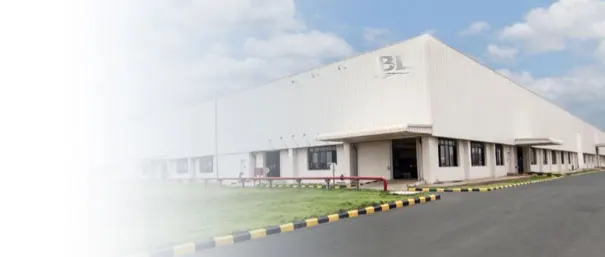ASTM 2205 Stainless Steel: Duplex Stainless Steel for High-Strength & Corrosion-Resistant Applications
ASTM 2205 (UNS S32205/S31803) is a nitrogen-enhanced duplex stainless steel that combines the benefits of austenitic and ferritic microstructures in a 50:50 ratio. This grade delivers exceptional strength (twice that of 304/316), superior resistance to stress corrosion cracking (SCC), and excellent pitting/crevice corrosion resistance, making it ideal for chemical processing, marine environments, and oil & gas industries. This article explores its chemical composition, mechanical properties, manufacturing process, and critical application considerations.
1. Core Chemical Composition (ASTM A240/A789/A790 Standards)
| Element | Content Range | Function |
|---|---|---|
| Chromium (Cr) | 22.00 – 23.00% | Forms passive Cr₂O₃ film; enhances resistance to oxidizing acids and pitting |
| Nickel (Ni) | 4.50 – 6.50% | Balances austenite-ferrite phase ratio; improves toughness and fabricability |
| Molybdenum (Mo) | 3.00 – 3.50% | Boosts resistance to chloride pitting/crevice corrosion (PREN ≥ 35) |
| Nitrogen (N) | 0.14 – 0.20% | Stabilizes austenite phase; significantly increases strength and corrosion resistance |
| Manganese (Mn) | ≤ 2.00% | Assists in deoxidation; improves hot workability |
| Silicon (Si) | ≤ 1.00% | Enhances oxidation resistance at elevated temperatures |
| Carbon (C) | ≤ 0.030% | Minimized to prevent intergranular carbide precipitation |
| Phosphorus (P) | ≤ 0.030% | Controlled impurity to maintain weldability |
| Sulfur (S) | ≤ 0.020% | Restricted to avoid hot cracking during welding |
2. Key Mechanical Properties (Room Temperature)
- Tensile Strength (σb): ≥ 620 MPa (90 ksi) — nearly double that of 316L
- Yield Strength (σ0.2): ≥ 450 MPa (65 ksi) — enables thinner sections with equivalent load capacity
- Elongation (δ): ≥ 25% — retains ductility despite high strength
- Hardness (HB): ≤ 290 — higher than austenitic grades but still machinable
- Impact Toughness (CVN): ≥ 100 J at -46°C — excellent low-temperature performance
- Pitting Resistance Equivalent (PREN): ≥ 35 (calculated as %Cr + 3.3×%Mo + 16×%N)
3. Manufacturing Process Characteristics
- Melting: Triple-melted process (EAF + AOD + VOD) to ensure precise nitrogen control (0.14-0.20%) and minimize inclusions that could compromise corrosion resistance.
- Hot Working: Forged or hot-rolled at 1100-1200°C with strict temperature control to maintain 50:50 phase balance; rapid cooling to prevent sigma phase formation.
- Solution Annealing: Heat treated at 1020-1100°C followed by water quenching to dissolve intermetallic phases and restore optimal corrosion resistance.
- Cold Working: Limited to ≤20% deformation to avoid detrimental phase transformations; intermediate annealing required for heavy forming operations.
- Surface Finishing: Pickling in nitric-hydrofluoric acid blend to remove oxide scale; passivation with nitric acid to enhance the chromium-rich passive layer.
4. Critical Application Fields
Oil & Gas Industry
Subsea pipelines, umbilicals, and topside processing equipment (scrubbers, separators) where resistance to H₂S/CO₂ corrosion and chloride stress cracking is critical. Compliant with NORSOK MDS D57/D58 standards.
Chemical Processing
Pressure vessels, heat exchangers, and reactors handling organic acids (acetic, formic), chlorides, and caustic solutions. Superior to 316L in resisting crevice corrosion in stagnant zones.
Marine & Desalination
Seawater cooling systems, ballast water tanks, and desalination plant components (pumps, valves, piping) where resistance to pitting in 3-6% NaCl environments is required.
Pulp & Paper
Bleach plant equipment, digesters, and white liquor tanks exposed to sulfides and chlorides at elevated temperatures (up to 300°C). Outperforms 317L in bleach environments.
Structural & Architectural
High-strength bridges, offshore platforms, and architectural facades in coastal areas where combination of strength and corrosion resistance reduces maintenance costs.
Food & Pharmaceutical
High-pressure processing equipment and hygienic piping systems where strength allows thinner walls (reducing cleaning time) while maintaining ASME-BPE compliance.
5. Comparison with Common Stainless Steel Grades
| Property | ASTM 2205 | 316L | 304/304L | Super Duplex 2507 |
|---|---|---|---|---|
| Yield Strength (MPa) | 450 | 205 | 205 | 550 |
| Pitting Resistance (PREN) | 35-38 | 25-28 | 18-20 | 42-44 |
| Stress Corrosion Cracking | Excellent | Poor (above 60°C) | Poor | Outstanding |
| Cost (Relative) | 1.4× | 1.0× | 0.9× | 1.8× |
| Typical Max Temp (°C) | 300 | 425 | 870 | 315 |
6. Selection & Fabrication Guidelines
- Welding: Use ER2209 filler metal (overmatching alloy); maintain interpass temperature ≤150°C to avoid nitride precipitation. Post-weld annealing not typically required for thicknesses ≤20mm.
- Machining: Requires rigid setups and sharp tools (carbide or ceramic inserts); use slower speeds (60-70% of 304 rates) and higher feeds to avoid work hardening.
- Corrosion Limits: Avoid prolonged exposure to temperatures above 300°C (risk of sigma phase formation) or strongly reducing acids (e.g., hydrochloric acid >5%).
- Surface Finish: #4 or #8 mirror finish recommended for hygienic applications; electropolishing can further enhance corrosion resistance (Ra ≤0.5 μm).
- Certification: Verify compliance with ASTM A240 (plate), A789 (tube), or A790 (pipe) standards; request PMI testing for critical applications to confirm alloy composition.
7. Request a Duplex Stainless Steel Quote
For customized ASTM 2205 stainless steel products—including sheets, plates, pipes, or fittings—contact our technical team. We provide mill-certified materials with full traceability and can assist with material selection for your specific corrosion challenges.


